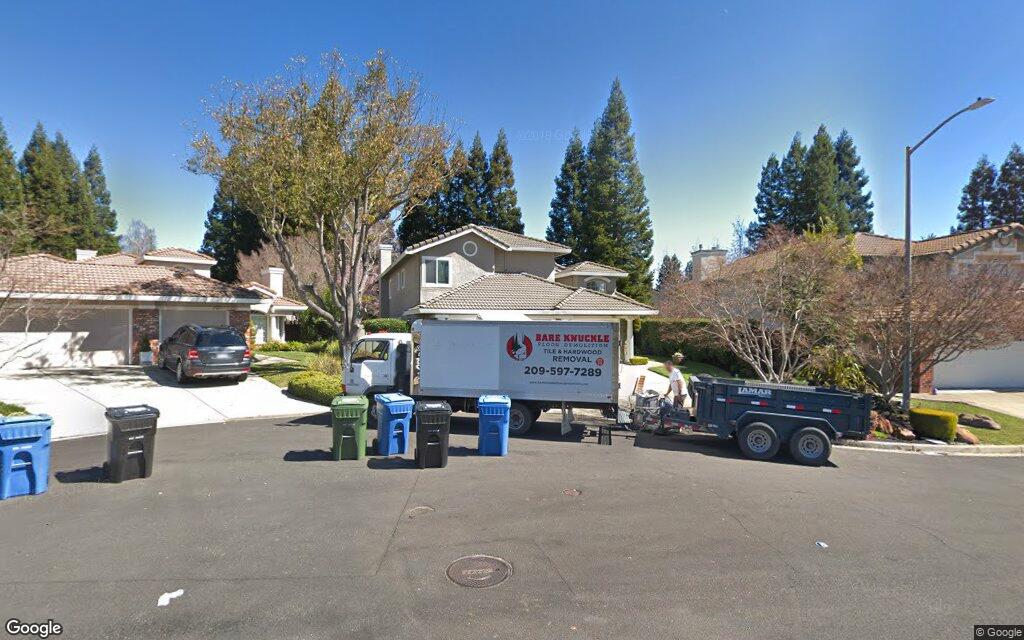A decades-long plan to reinforce the Golden Gate Bridge to withstand major earthquakes is moving into its final phase of construction.
The board governing the Golden Gate Bridge, Highway and Transportation District, which manages the span, voted Friday to authorize about $1.01 billion in allocations toward the project, which has surged in cost. It is expected to take more than 10 years to complete.
Related Articles
Gov. Newsom signs two suicide-prevention bills
6 new California laws going into effect today
The approvals include a $864 million contract with Halmar International LLC, a New York company, plus a $41.3 million contingency for unforeseen expenses. The board also authorized a $141.7 million budget increase, with those funds being drawn from the district reserves.
“To be here today awarding this contract is an exciting step to ensure the bridge is safe for our future generations,” said Patricia Garbarino, a district board member representing Marin. “Thank you to staff and to everyone involved in the herculean effort … to reach this important milestone for the seismic retrofit of our 88-year-old bridge.”
“This is a huge investment that we’ve been excited to make for a long time,” Marin County Supervisor Dennis Rodoni, a member of the board, said ahead of the vote. “The bridge is an important infrastructure in the North Bay that we’re happy to protect and preserve. It’s a great investment.”
Initially, the project was estimated to cost about $880 million. The new project cost estimate stems from sharp price increases in the construction industry and materials market since the pandemic, said Paolo Cosulich-Schwartz, a district official.
Because of the project size, the work is being split into two subphases, he said.
The approval covers what is described as “contract 1,” a construction project expected to begin in early 2026 and last six years, he said. A subsequent “contract 2” — at the estimated cost of an additional $900 million — will follow completion of the first contract. Work under the second contract is expected to continue for another five years, Cosulich-Schwartz said.
“The district is committed to completing the entirety of the Golden Gate Bridge seismic retrofit project and will be developing a financing plan for the final construction contract over the coming years,” he said.
The contract approval comes after district officials voted this summer to remove diversity, equity and inclusion language in policy documents to avoid backlash from the Trump administration.
The U.S. Department of Transportation put the Golden Gate Bridge district on notice in a April letter that warned against DEI policies. The letter from U.S. Transportation Secretary Sean Duffy stated that any “policy, program, or activity that is premised on a prohibited classification, including discriminatory policies or practices designed to achieve so called ‘diversity, equity and inclusion,’ or ‘DEI,’ goals, presumptively violates Federal Law.”
District staff said a $395.7 million federal grant to support the seismic retrofit of the iconic span was potentially at stake.
Bridge tolls are the district’s primary source of revenue, and, unlike most other transit agencies, the district receives no dedicated state or local tax funding. When the district buys new buses or ferries or does work on the bridge, about 80% of the money comes from federal sources, staff said.
In addition to the $395.7 million grant in federal Bridge Investment Program funds, the “contract 1” project is supported by $200 million from the Caltrans Federal Highway Bridge Program and $274.3 million in district reserves.
The four-phase seismic retrofit project, which was launched in 1997, was prompted by the Loma Prieta earthquake in 1989. The 15-second, 6.9-magnitude quake caused major damage to bridges and highways, including the collapse of the top deck of the Bay Bridge and the Cypress Street viaduct in Oakland. The Golden Gate Bridge had no observable damage but was located about 60 miles north of the quake’s epicenter.
A vulnerability study conducted by the bridge district after the Loma Prieta quake found that a magnitude 7.0 quake with an epicenter near the bridge could cause major damage to the span. A magnitude 8.0 temblor would create a substantial risk of collapse at the two viaducts on the San Francisco and Marin entry points as well as at the Fort Point Arch.
About $260 million in seismic upgrades were completed at these vulnerable sections of the bridge from 2001 to 2014. District staff said the bridge no longer faces the risk of collapse at these sections, but there is still a risk of significant damage elsewhere on the span.
The final phase includes strengthening the main span and two side spans while reinforcing both towers and the south tower pier.
The project will focus on the towers and side spans first because they are less flexible than the main span. That work includes installing large steel plates at tower bases and strengthening the tower trusses. Expansion joints where the road meets the towers and pylons will be replaced to allow for three-dimensional movement in case of a large earthquake.
A total of 255 floor beams on the road will be retrofitted and 38 absorption devices will be installed to reduce the flow of quake energy into the bridge. The project will also repaint the south tower above the road.
“While the Golden Gate Bridge can safely withstand a large earthquake today, the final phase of the seismic retrofit will help ensure the bridge remains in service in the aftermath of a major natural disaster and will help our region respond and recover in the days, weeks, and months that follow,” said John Eberle, district engineer. “We’re excited to embark on this project that will create hundreds of union jobs and protect the Golden Gate Bridge for future generations.”
IJ reporter Steven Rosenfeld contributed to this report.




